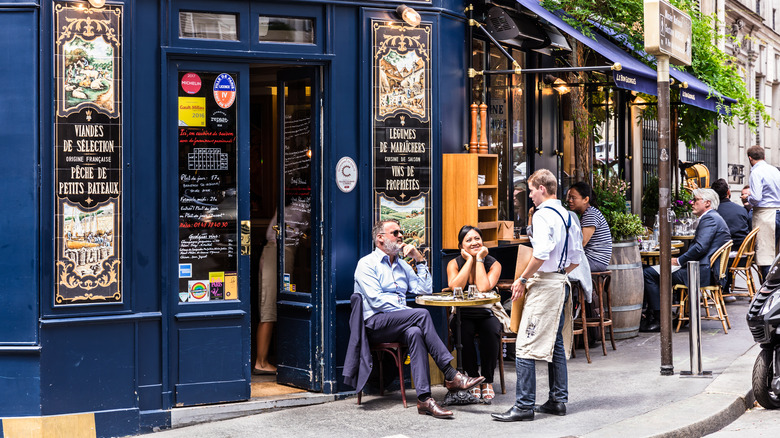The Affordable Way To Dine In Europe As A Tourist, According To Rick Steves
On the subject of dining in Europe, when Rick Steves speaks, we listen. Whether you're trying to avoid the worst mistake you can make while dining in Europe (eating the hotel breakfast instead of finding something delicious in town) or just looking for travel recommendations, when it comes to exploring the continent, Steves is the expert. So when he gives his advice for the best way to eat affordably as a tourist in Europe, our ears — and stomachs — perk up.
His take may fly in the face of those who prefer to keep as low a touristic profile as possible when abroad, but it's well worth considering. On his website, Steves recommends opting for what's known as "the tourist menu." In Italy, this is referred to as menù turistico, and in France, menu touristique, but either way, it's a smart, cost-controlled way to get a sense of the local flavors and dishes without getting order anxiety.
What should you expect when you order the tourist menu? According to Steves, such a listing "offers confused visitors a no-stress, three-course meal for a painless price that usually includes service, bread, and a drink." This is not something you can find just anywhere, but it's a relatively common menu addition throughout the more tourist-heavy areas in Western Europe.
What to expect from a tourist menu
While Rick Steves' advice is perfect for hungry travelers on the go who want to get a lay of the culinary land, it's worth noting that adventurous eaters looking to dive into the deep end of a new country's cuisine might find the offerings a little tamer than they'd like. After all, a tourist menu is designed to bring in all levels of tourist, meaning it must maintain a level of mass appeal.
If you're in Tuscany, don't expect to find lampredotto, a regional specialty made from edible tripe taken from the fourth stomach of a cow and often served as a sandwich. However, if a selection of tortellini with ragù served alongside salad, fruit, and a glass of wine sounds like a good bit of eating (and honestly, how could it not?), then hit up that tourist menu with no reservations — though in terms of securing a table, checking to see if they take reservations is probably a good idea.
And since budget-friendly dining is the name of the game, don't be surprised when a restaurant in Italy hits you with a coperto charge. This small fee is included in the bill and covers the silverware, linens, and space you used up while there. It's not a tip, though, so if your bill doesn't include a service fee and you found the experience enjoyable (or if you're eating at an upscale restaurant), consider leaving a 10% tip.


